Remember-- All plants and animals in the park are protected. Stay on the trail. Do not pick vegetation. Observe wildlife from a distance. In the event of lightning, get off the trail.Introduction:Survival. Every living thing needs food, water, and a sheltering home in order to survive. Here, on the dry, sandy, wind-blown southern tip of Anastasia Island, these needs may seem hard to come by.Take a few minutes to walk this half-mile boardwalk trail and discover some of the plants and animals who do find homes here at Fort Matanzas National Monument and find out how, in spite of seemingly harsh living conditions, they manage to survive on the barrier island. 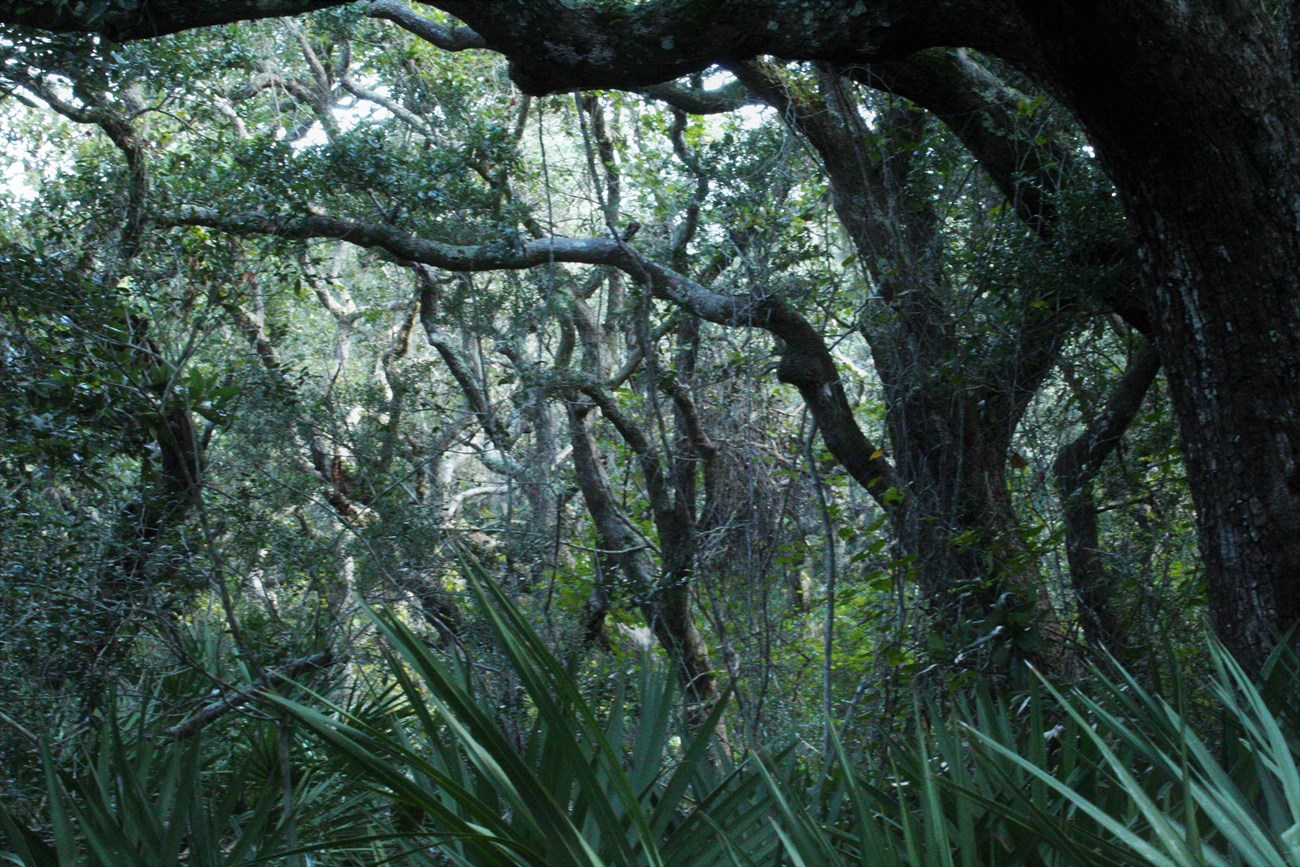
1. Coastal Hammock Forest(Hammock is a Native American word for shady place.)The interior of barrier islands, the remnants of ancient dune systems lying between the mainland and the sea, were once completely covered by thick coastal forests like this small surviving piece. You have just climbed the remnant of one of these dunes rising as much as 20 feet above the level of the parking lot. Started from wind and animal-borne seeds, tall trees such as magnolia, red bay, palm, and several varieties of oak as well as under-story shrubs such as paw paw, wax myrtle, and yaupon holly are able to survive here on a base of sand because generations of fallen leaves have decomposed into a rich, but shallow, soil which provides nutrients and holds moisture. In turn, the hammock’s thick vegetation provides shade, shelter, moisture, and food, which help lichens, ferns, insects, spiders, reptiles, birds, and mammals survive. 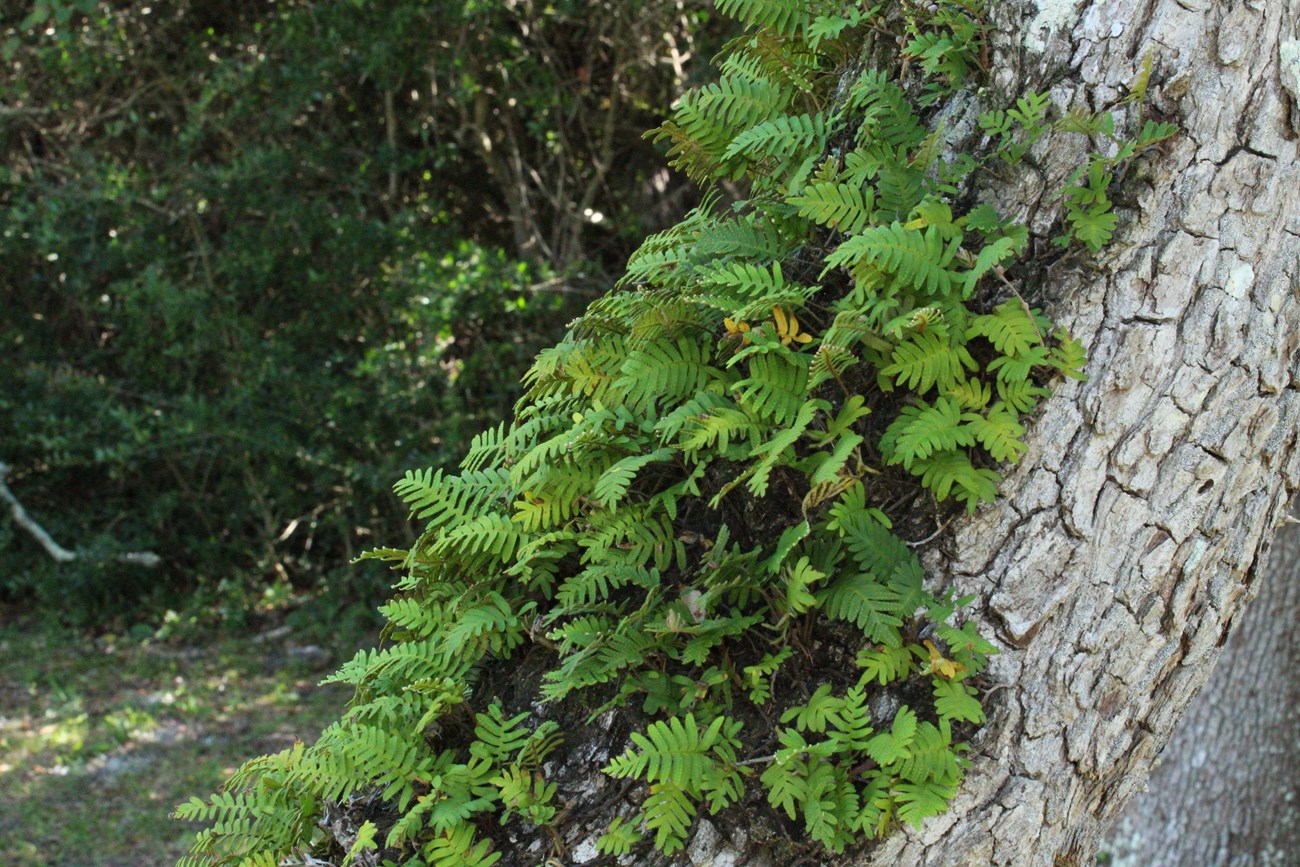
2. Leaf AdaptationsAlthough nearly 55” of rain falls here each year, almost all of it falls during the Florida summer months of April through September, and then it usually comes in brief, but heavy, thunder showers which soak quickly into the sandy ground. Many of the hammock plants have leaves especially adapted to make the most of the water they catch and to preserve moisture through drier times.Look at (but do not pick) some of the leaves. Some have edges which curl under, or a thick or waxy covering, all of which help prevent evaporation. The resurrection fern, growing on the rough bark of oak trees, has still another adaptation for survival. Between rain showers, it “dies”, becoming brown and shriveled in a resting state. However, after a rain, it comes back to life, becoming lush and green again. (Look for resurrection fern on the oak trees where the dirt road crosses the trail.) 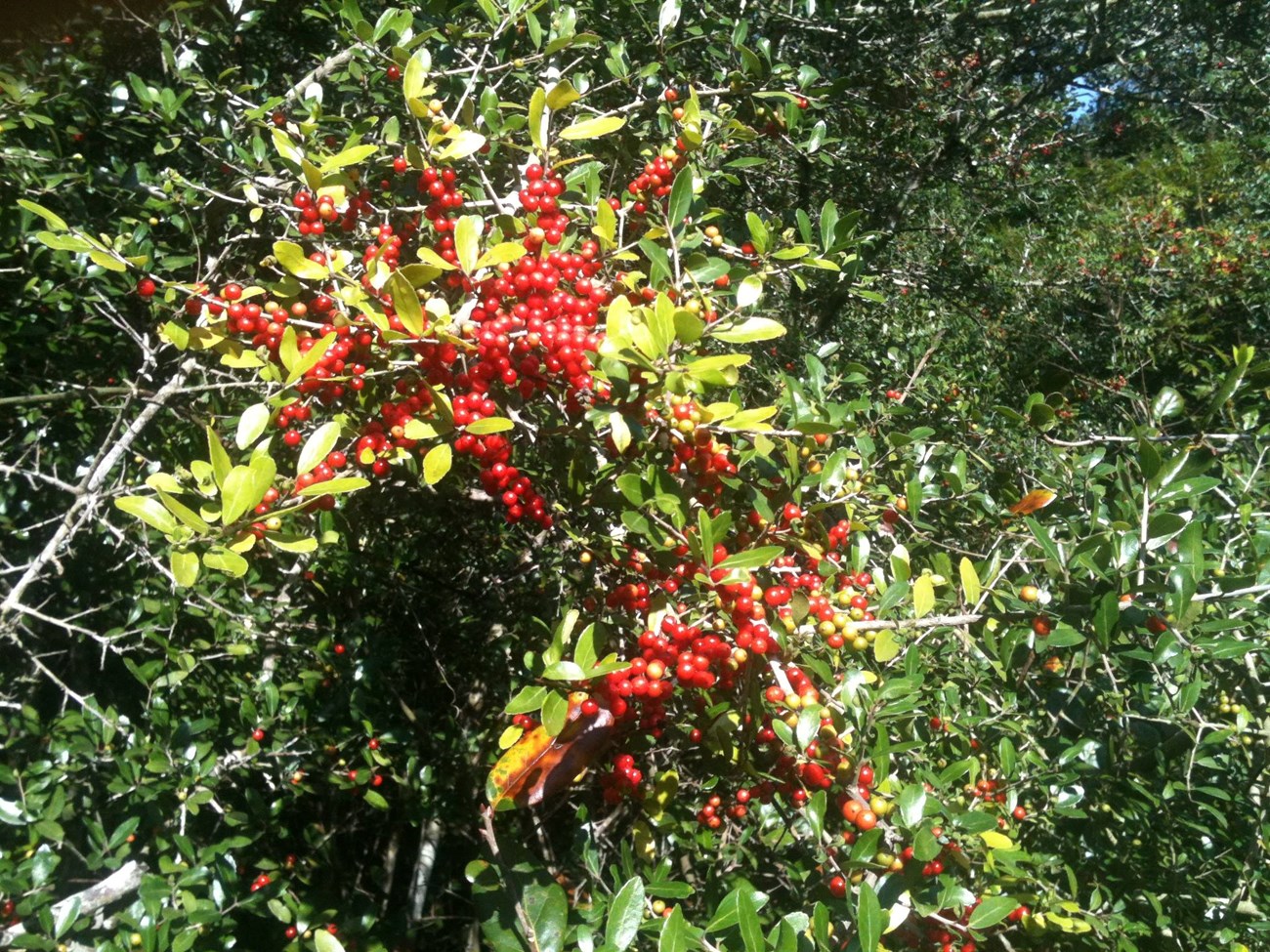
3. Berries and BirdsIf you walk the trail in the spring, many of the plants and shrubs will have clusters of tiny flowers. By July these will have become green berries which by fall will have turned red (yaupon holly), magenta (beautyberry), purple (muscadine and summer grape) or gray-green (wax myrtle). This ripening of the fruit coincides with the fall migrations of birds like Carolina wrens and northern parulas from the northern states to their winter territory in South America.As the birds stop to rest in the sheltering hammock, they eat the berries which give them the burst of energy needed to survive the long Caribbean crossing. In turn, by eating the berries and then expelling or dropping the seeds, the birds are helping these plants survive as well. 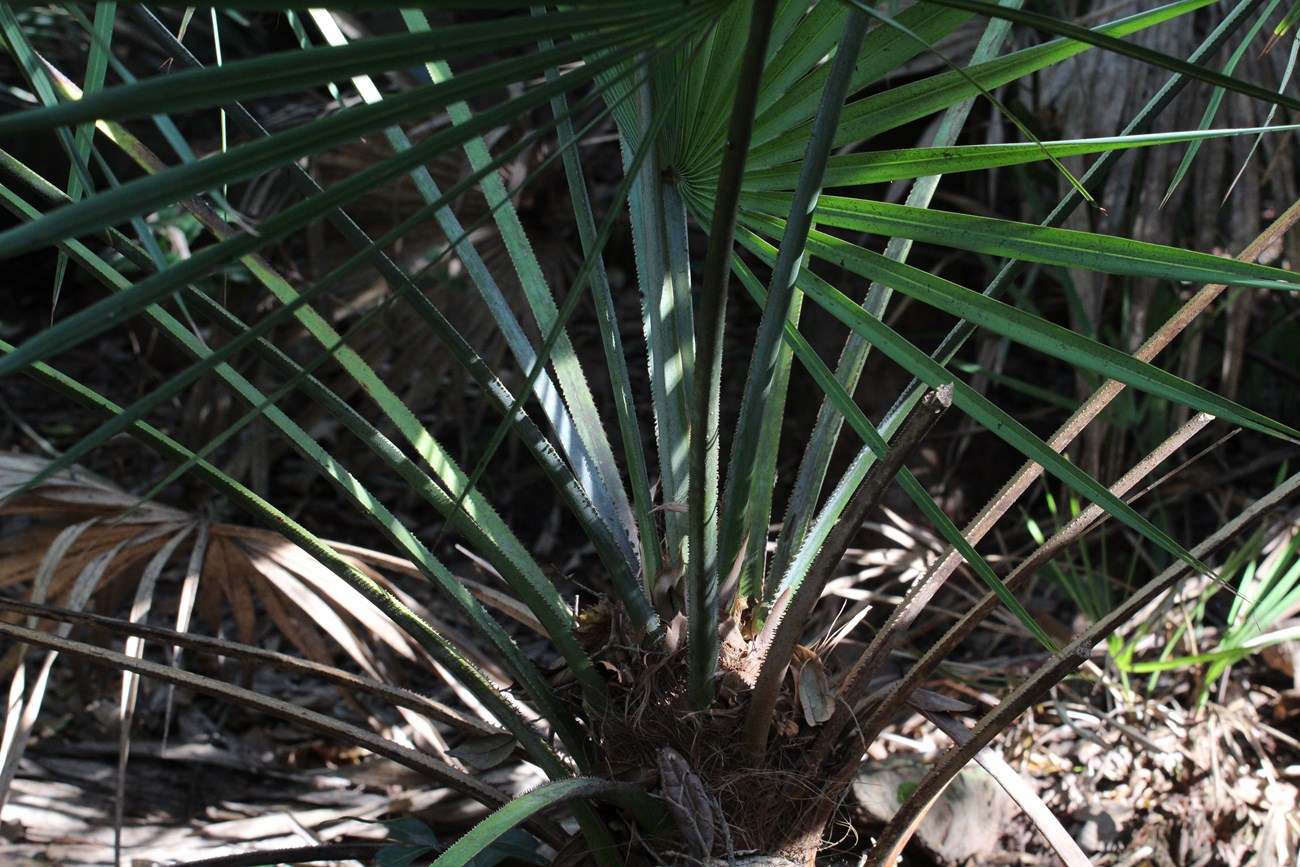
4. Saw PalmettoThe saw palmetto with its fan-shaped leaves is a common under-story plant of the hammock. These large, drooping leaves with saw-like teeth along the stem provide shelter, homes, and protection for reptiles and smaller mammals. Bees use the yellowish-white flowers for honey, and later the ripe, black fruit provides food for raccoons and birds.Besides helping forest creatures survive, the saw palmetto is itself a survivor. Its tough, thick bark and horizontal, nearly underground trunk help this diminutive tree live through the occasional forest fire. Within a week or two after a fire, the palmetto is the first to send up new leaves. These new stalks soon provide shelter and food until the rest of the forest plants re-establish themselves. 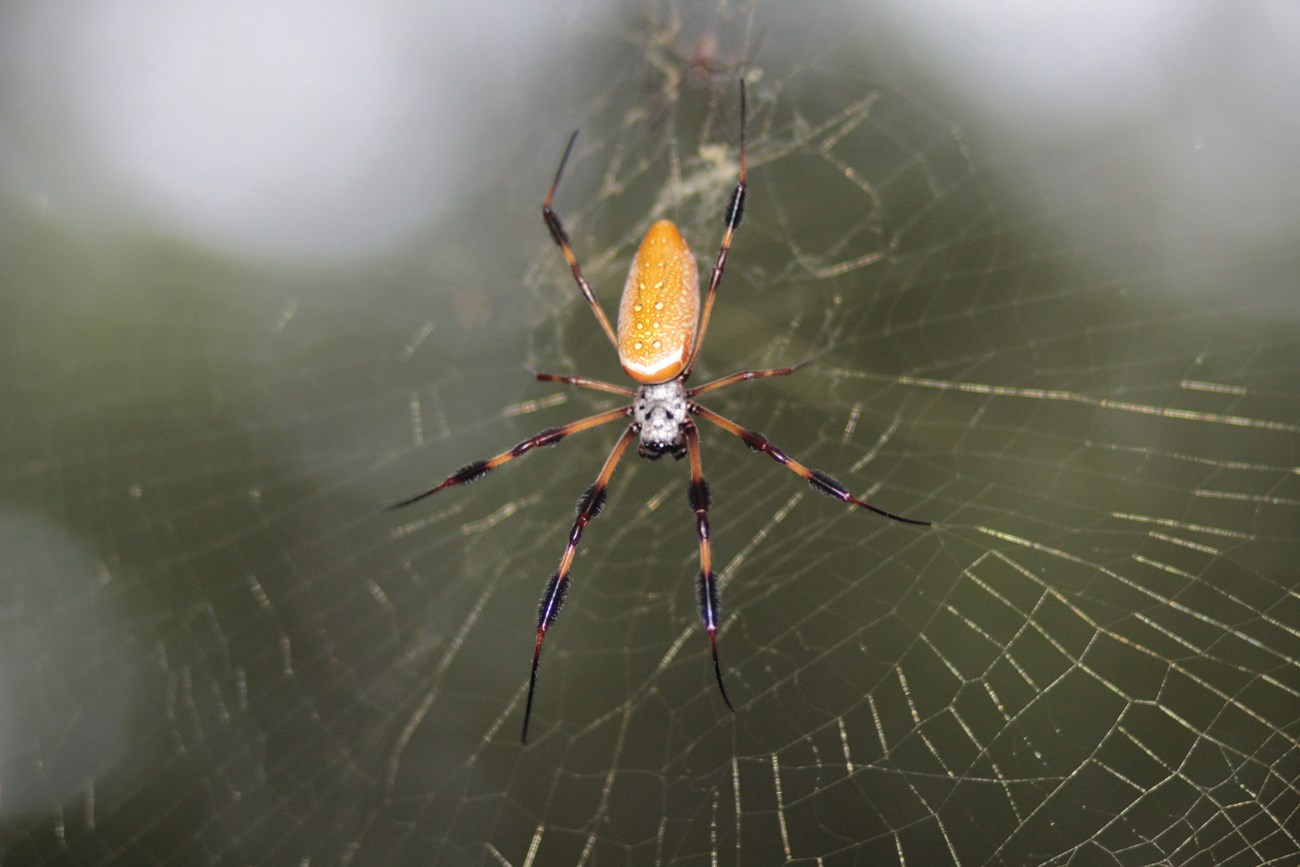
5. SpidersDuring the summer months the most visible animals of the hammock are spiders, especially the “hairy kneed” golden silk spider (locally called banana spider) and the florescent green and orange orchard spider.These are both orb weavers. Notice how in more open areas, the circular webs are oriented vertically to catch flying insects like mosquitoes. In more closed areas, however, the webs are almost horizontal—like safety nets to catch insects falling from the trees. Funnel spiders have an even more specialized web for survival. Located close to the ground or in the bark of trees, these funnel-shaped webs capture insects crawling by and direct them down to the narrow end where the spider awaits. Watch for spiders all along the trail. 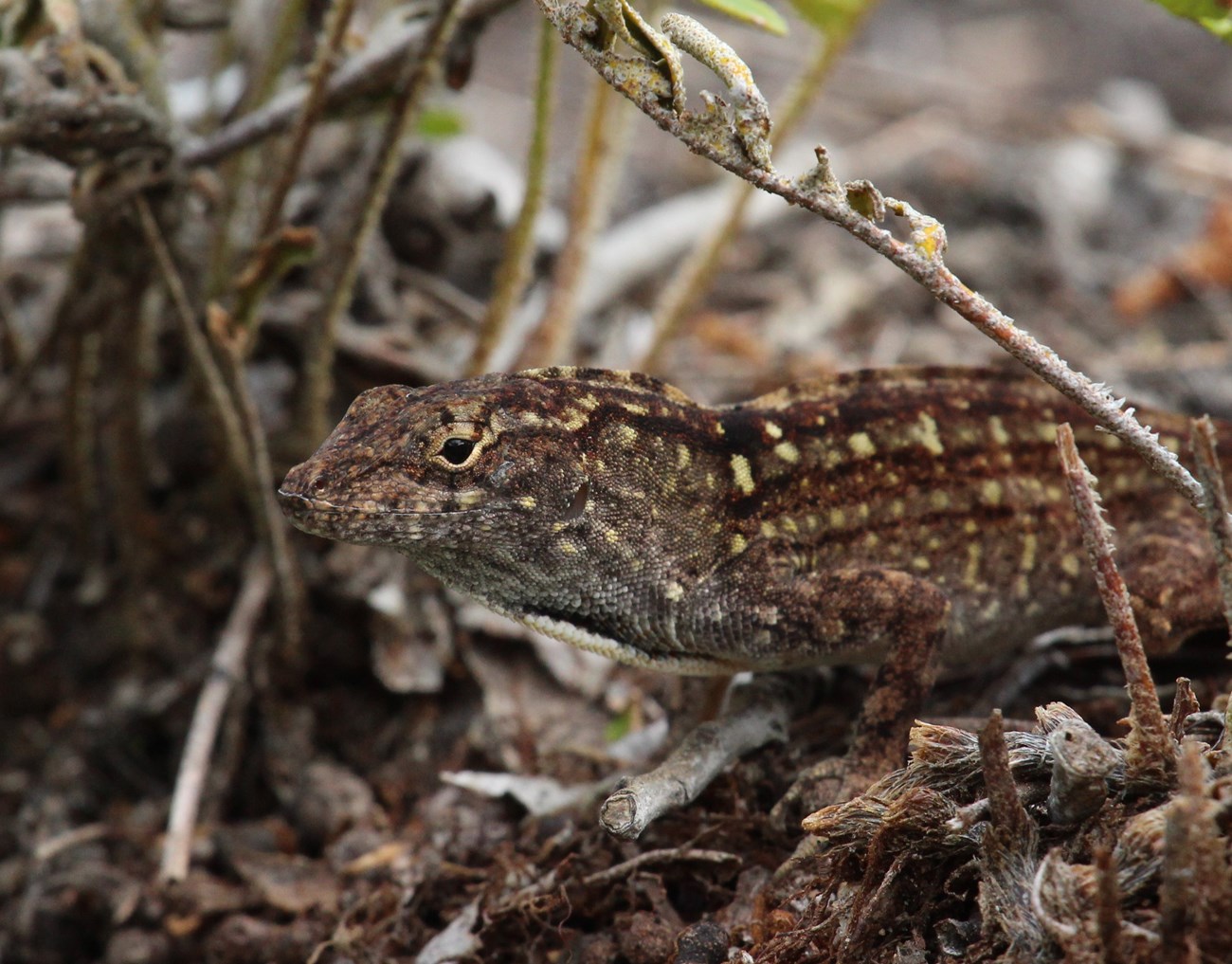
6. ScrubWhat happened to the temperature?On a summer day, the temperature leaps as you leave the shady confines of the hammock and enter this open, drier area. On a winter day the temperature may seem colder without the trees to block the wind. This transitional zone between the forest and the beach is called the scrub. Stunted trees bend twisted branches away from the ocean in a futile effort to get away from the wind-blown salt. Hardy wildflowers struggle to draw life from a nutrient-poor soil. A brown anole sips a drop of dew from a fallen leaf, here where fresh water is a rare event. Plants and animals which live in the scrub must be able to survive a much harsher, drier, saltier environment than those of the hammock. 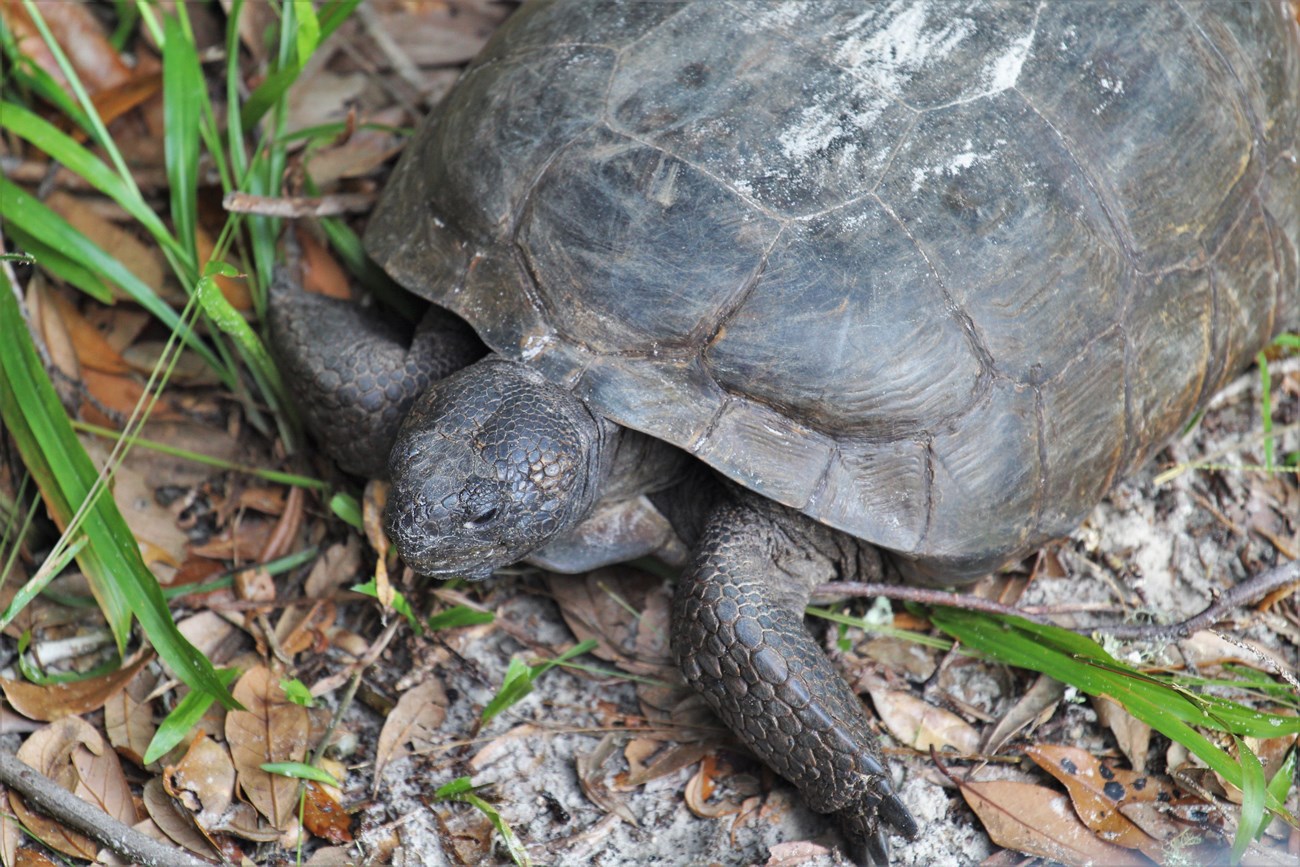
7. Gopher TortoiseMany of these animals would be unable to survive in the scrub without the help of the gopher tortoise. This large (up to 12”) land turtle digs its burrow up to 30’ deep into the sides of dunes. Over 80 species of animals, including snakes, raccoons, frogs, lizards, rabbits, beach mice, quail, and opossum depend on abandoned or active tortoise burrows for homes, safety, moisture, and shade.The gopher tortoise, a species of special concern in Florida, can best be seen along the back loop of the trail in mid-morning or late afternoon resting at the mouth of its burrow or nibbling the prickly pear cactus. 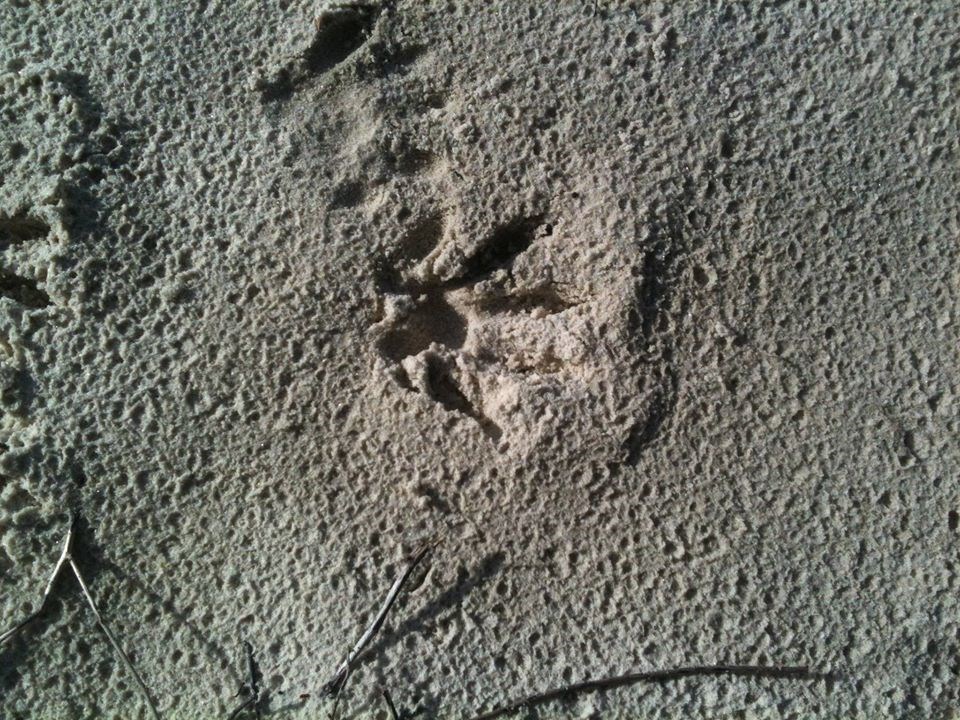
8. TracksSince many of the animals survive by being nocturnal, you probably will not see many out in the heat of the day. But if you look at the sand along the boardwalk, you may see tracks--signs that some of the inhabitants of the hammock and scrub have passed by. Look for the handprints of raccoons or the tiny paw prints of cotton rats. The tails of five-lined skinks make narrow, winding trails. Wider trails may be from the eastern indigo snake, a non-venemous threatened species which lives here. The gopher tortoise leaves a track which looks like a tire track in the sand.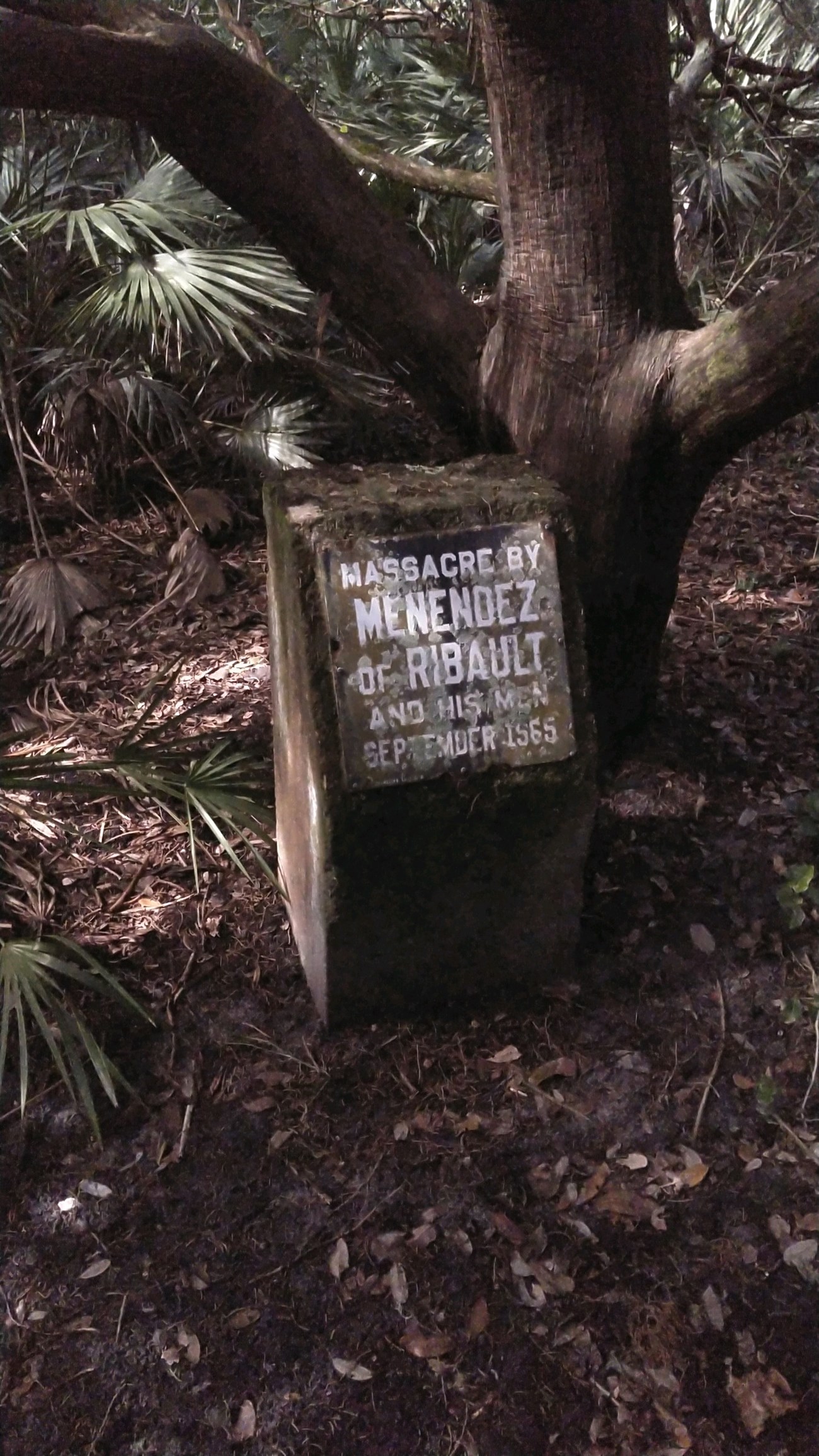
9. The MassacreA different clash for survival came to the island in 1565. One year earlier, a group of French Protestants called Huguenots, had settled on Spanish-claimed Florida at Fort Caroline near present-day Jacksonville.In 1565 Pedro Menéndez established St. Augustine and led the Spanish troops against Fort Caroline at the same time that the French were on their way to attack the Spanish town. However, a fierce storm or late-season hurricane scattered and wrecked the French ships. Eventually, the two forces met at this inlet. Menéndez demanded that the French surrender. Starving and exhausted, the French took the chance with fellow Europeans. They were marched into the dunes and slaughtered. Nearly 250 Frenchmen were killed. Menendez then named this inlet Matanzas, the Spanish word for “massacres”. Was this a cruel, cold-hearted act by the Spanish? Was Menendez merely following orders to rid Spanish territory of trespassers? What would the French have done to the Spanish if they had won? With food already low and no chance for resupply until spring, would there have been food for all if Menéndez had brought the French back alive to St. Augustine? Letting the French survive in October might have meant the starvation of everyone by May. (The actual site of the massacre has never been found.) 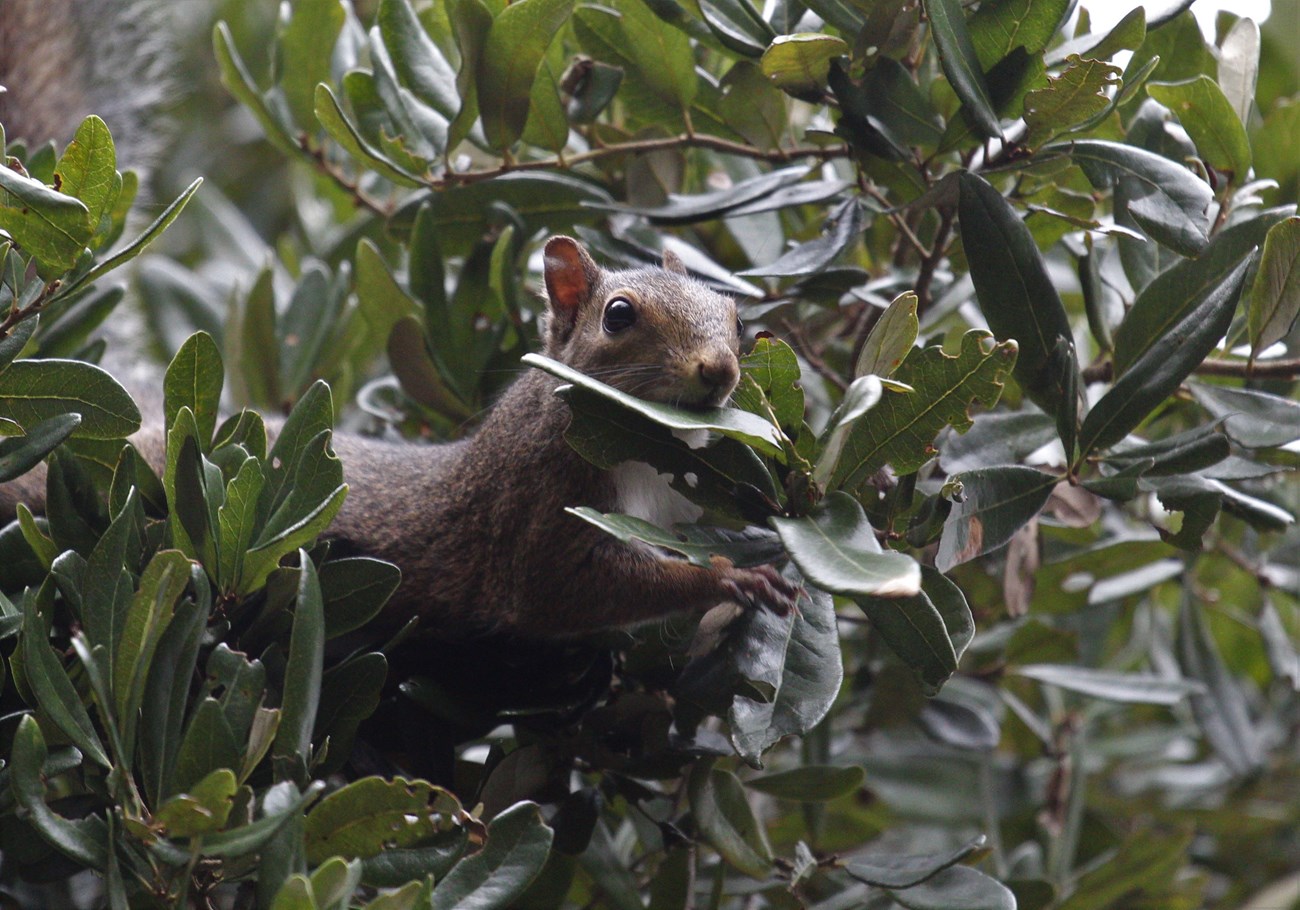
10. An Island of HopeStop…and listen. Amid the sounds of the natural world—the buzz and hum of insects, the chirps of birds, the rustle of a lizard in the leaves—intrude the sounds of civilization—the noise of traffic, of boat motors.The barrier island is less than ½ mile wide at this point. This piece of forest and scrub are tiny remnants of the original which covered the island. As more and more people move to or vacation on the Florida coast, Fort Matanzas National Monument becomes an island of hope for the survival of the native plants and animals surrounded by a sea of people and progress. But, how long will this natural area itself survive? And, can it survive by itself? |
Last updated: June 19, 2021
